This Sambar recipe without coconut is a classic south-Indian mixed vegetable and lentil curry served with idly, dosa, vada or rice. And all that while still keeping the veggies intact. Yes, I know we all have been there with a pot of sambar with no sight of the vegetables you had added. Right? Let's fix that...
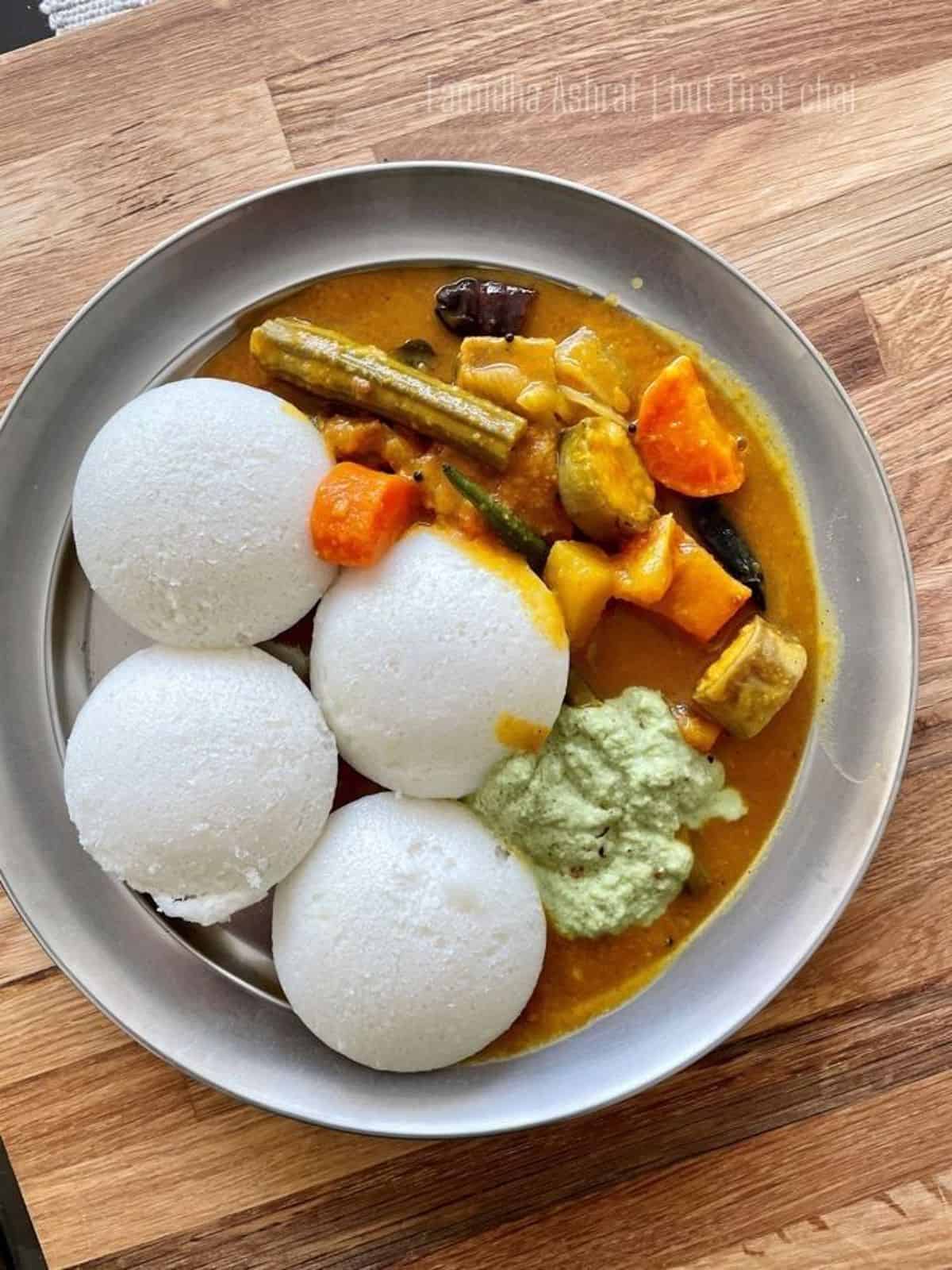
I had no plans to share a Sambar dal recipe because I believe the internet is full of it. But "Sambar" tops my search stats and dm requests. I am guessing because I always share my plate of lunch or breakfast on Stories. So here I am with a detailed sambar recipe using my homemade Sambar powder.
Jump to:
📋Why you'll love this recipe?
A popular South Indian lentil and vegetable stew, often served with rice, idli, or dosa. It is renowned for its tangy and spicy flavors, which are a result of the unique blend of spices and tamarind.
🥘Sambar recipe ingredients
My recipe of south indian sambar without coconut is an easy and basic Tamil Nadu-style recipe. Before you plan to make this recipe, take a day to prepare the homemade sambar powder. You can refer my post on how to make samabr powder.
For the sambar recipe without coconut, you will need:
- Dal (lentils): I use only tuvar dal (pigeon peas) but you may mix tuvar and masoor.
- Vegetables: You will need garlic, mini shallots, mixed sambar veggies*, tomatoes, curry leaves, coriander leaves and green chillies. If you cannot source mini shallots, replace it with 1 medium-sized red onion, sliced thinly.
- Ground spices: You will need turmeric, red chilli, hing and my sambar powder. You may use store-bought sambar powder and add more or less as per pack instructions.
- Cooking oil: I love to use ghee or coconut oil or gingelly sesame oil.
- Tamarind pulp: You may replace it with tamarind concentrate or in a pinch pomegranate molasses (2 tsp)
- Whole spices: You will need fenugreek seeds, mustard seeds and dried red chillies
See the recipe card for quantities.
🥘Sambar Vegetables
*ready-to-use carrots, green beans, potato, yam, brinjal, gourds, drumsticks, okra, raw plantains, pumpkin, white radish, etc. I always buy the fresh Sambar veggies box from Lulu. If using okra (lady's finger), it is better to roast them in oil and add them in the end to prevent slimy sambar.

🔪Instructions
There are a few different ways to prepare Sambar as per our kitchen convenience. Please scroll down to the Recipe card for details and print option.
- Method 1: Pressure cook the soaked dal separately. In a sauce pot, start off with tempering, then sauteing vegetables with spices, then simmering with cooked dal.
- Method 2: Pressure cook the soaked dal and vegetables together. In a saucepot, do the tadka with shallots and add the cooked ingredients with water and simmer.
- Method 3: Boil the vegetables with spice powders, add the cooked dal and simmer. Prepare the tadka in a pan and pour over the simmering Sambar.
If you plan to prepare Sambar a day ahead, then add the tempering after reheating.
Where there is sambar, chutney will follow! Serve with idli, vada (recipe coming soon), dosa, etc.
❄️Storage
This is quiet a big batch of Sambar recipe so I do have enough to serve again. I refrigerate in a sealed container for not more than 3 to 5 days. You can reheat on low and slow and serve with your favourite south Indian breakfasts or make Sambar Sadam for lunch.
☝️FAQ
Sambar is traditionally made using Toor / Tuvar / Split Pigeon Peas. You may use a mix of tuvar dal and masoor dal.
Sambar is made with one or more vegetables like carrots, green beans, potato, yam, brinjal, gourds or winter melon, drumsticks, okra, raw plantains, pumpkin, and white radish. There may be more that I am not aware of. It can be daunting to go shopping for each vegetable when you need only one piece of each. So, I usually buy the ready-to-use sambar veg mix from Lulu. Some vegetable vendors will be happy to send your sambar veggies by weight... like you can ask for 1 kg of sambar veggies.
The taste of sambar depends on the mix of vegetables and lentils and the sambar powder or podi you have used. To improve the taste of an already cooked sambar, you may stir in more sambar powder or more tamarind extract, a little jaggery or just a knob of ghee. Don't forget the methi seeds in tempering, they impart a flavour too.
If you want to make your sambar thicker, you may add more cooked tuvar dal. To prevent a watery sambar, always include a few starchy vegetables like potatoes, yam and raw plantains. Taste and add more sambar powder as the powder has lentils, it will act as a thickener too. But do remember that lentil-based stews always get thicker as it sits.
Related
Looking for other recipes like this? Try these:
📖 Recipe Card
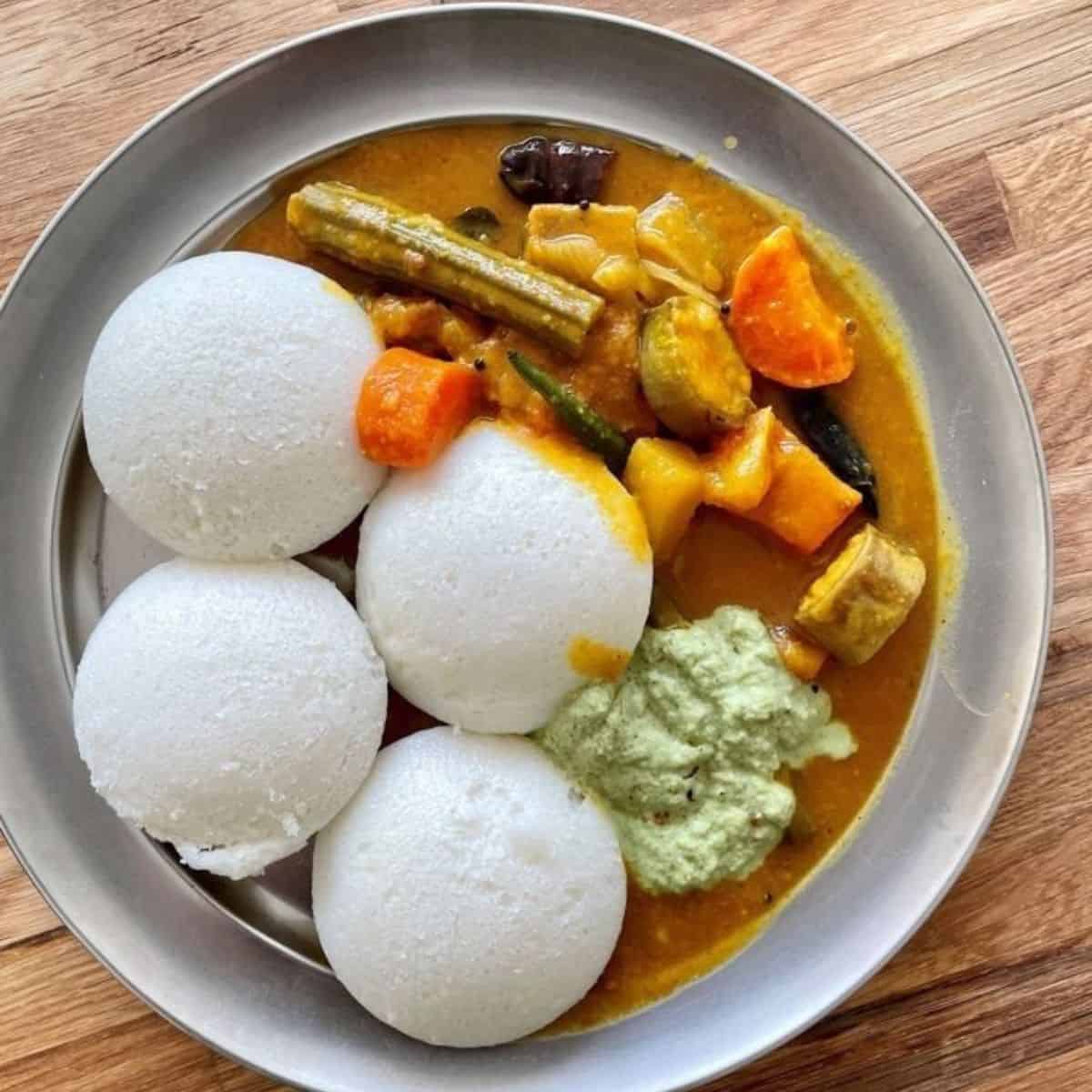
Sambar Recipe without Coconut
Equipment
- 1 Pressure cooker
- 1 Saucepot
Ingredients
For pressure cooking (boiling the lentils)
- ½ cup toor dal, (split pigeon peas)
- 2 garlic cloves
- 1 pinch turmeric powder
- 1 ½ cup water
- ½ teaspoon ghee
For tamarind extract
- 2 tablespoons tamarind pulp
- ¼ cup hot water
For cooking sambar
- 1 tablespoon ghee, or coconut oil
- ¼ cup mini shallots, (pearl onions)
- 500 grams sambar vegetables, (see post)
- 2 large tomato, chopped
- 2 to 3 green chillies
- ¼ teaspoon turmeric powder
- ½ teaspoon kashmiri red chilli powder
- 2 cups water, to cover the veggies
- 21/2 tablespoon sambar powder
- 1 teaspoon jaggery, optional
- Salt to taste
For Tempering (tadka)
- 1 tablespoon ghee , or coconut oil
- ½ teaspoon mustard seeds
- 2 sprig of curry leaves
- ¼ teaspoon fenugreek seeds, (methi seeds)
- a pinch of hing
- 2 dried red chillies
Last addition
- Fresh coriander leaves, chopped
- curry leaves
- 2 green chillies
- 1 teaspoon ghee , to be stirred in before serving
Instructions
Wash and soak the tuvar dal
- Rinse the dal a couple of times until the water runs almost clear. Soak the lentils in enough water for at least 20 minutes.½ cup toor dal1 ½ cup water
Pressure cook
- Add to a small pressure cooker along with garlic clove, turmeric and a smidge of ghee. Pressure cook for 10 minutes or 3 to 4 whistles on medium heat. Let the pressure release on its own. The cooked lentils should be cooked through and easily mashable with a spoon.2 garlic cloves1 pinch turmeric powder½ teaspoon ghee
Prepare the tamarind extract
- Soak the tamarind pulp in hot water and keep covered until required or at least for 10 to 20 minutes.2 tablespoons tamarind pulp¼ cup hot water
Cook the veggies for sambar
- Heat some ghee in a deep thick bottomed saucepot. Saute the pearl onions or onions until translucent. To have the veggies retain their shape till the end, it is better to first add the vegetables that need more time to cook to give them a head start.1 tablespoon ghee¼ cup mini shallots
- Add the chopped vegetables, tomatoes, turmeric, red chilli, half of the sambar powder and salt. Stir the veggies on high flame for 2 to 3 minutes. Pour water just enough to cover the veggies and bring this to a full boil. Reduce the flame to medium and cook partially covered until the veggies are almost cooked.500 grams sambar vegetables2 large tomato2 to 3 green chillies¼ teaspoon turmeric powder½ teaspoon kashmiri red chilli powder2 cups water21/2 tablespoon sambar powder
Prepare sambar
- Check the veggies by poking a knife through the centre of a few pieces to make sure they are cooked. The veggies should not be hard.
- Stir in the tamarind extract through a strainer or squeeze using your hands and mix well. Stir in the remaining sambar powder and the pressure-cooked dal.
- Mix everything thoroughly, taste and adjust the flavours. You may add more sambar powder, tamarind water, or jaggery to balance. Let it simmer on low to medium flame until the sambar comes to a boil. Switch off and move on to preparing the tempering.1 teaspoon jaggerySalt to taste
Prepare the tempering (tadka)
- Heat ghee or any coconut oil in a small tadka pan on a low flame. Add the mustard seeds and wait for them to splutter.1 tablespoon ghee½ teaspoon mustard seeds
- Next, add the curry leaves, methi seeds and hing and fry until the curry leaves are crisp.2 sprig of curry leaves¼ teaspoon fenugreek seedsa pinch of hing
- Switch off and add the dried red chillies and fry in the residual heat until they turn crisp. Pour this immediately into the pot of sambar, stir and cover the pot.2 dried red chillies
Serve and store Sambar
- Stir in the freshly chopped coriander leaves, curry leaves and a teaspoon of ghee before serving with steamed rice, idli, dosa, vada, etc.Fresh coriander leavescurry leaves1 teaspoon ghee2 green chillies
- Store any leftovers covered in the refrigerator for not more than 3 days.


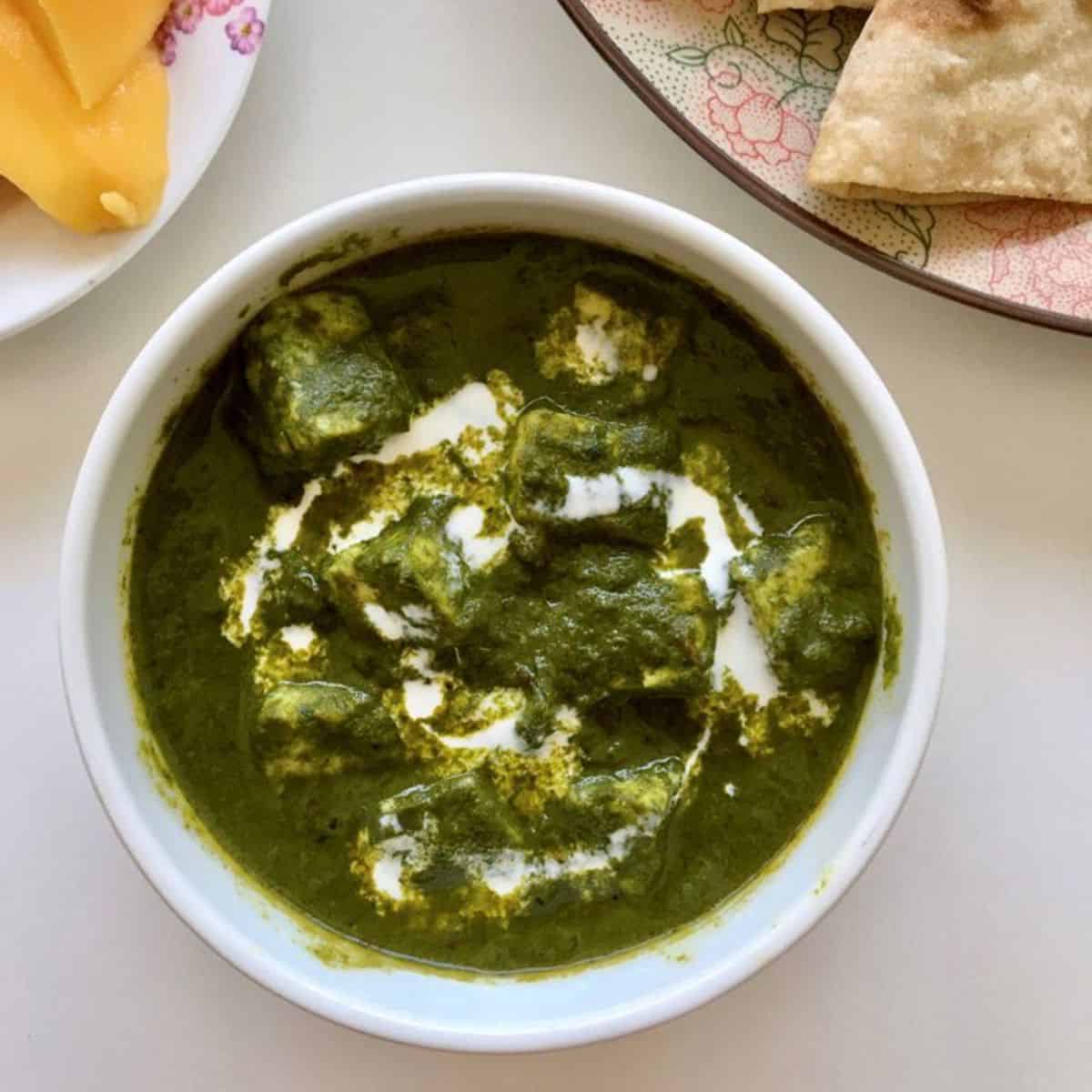

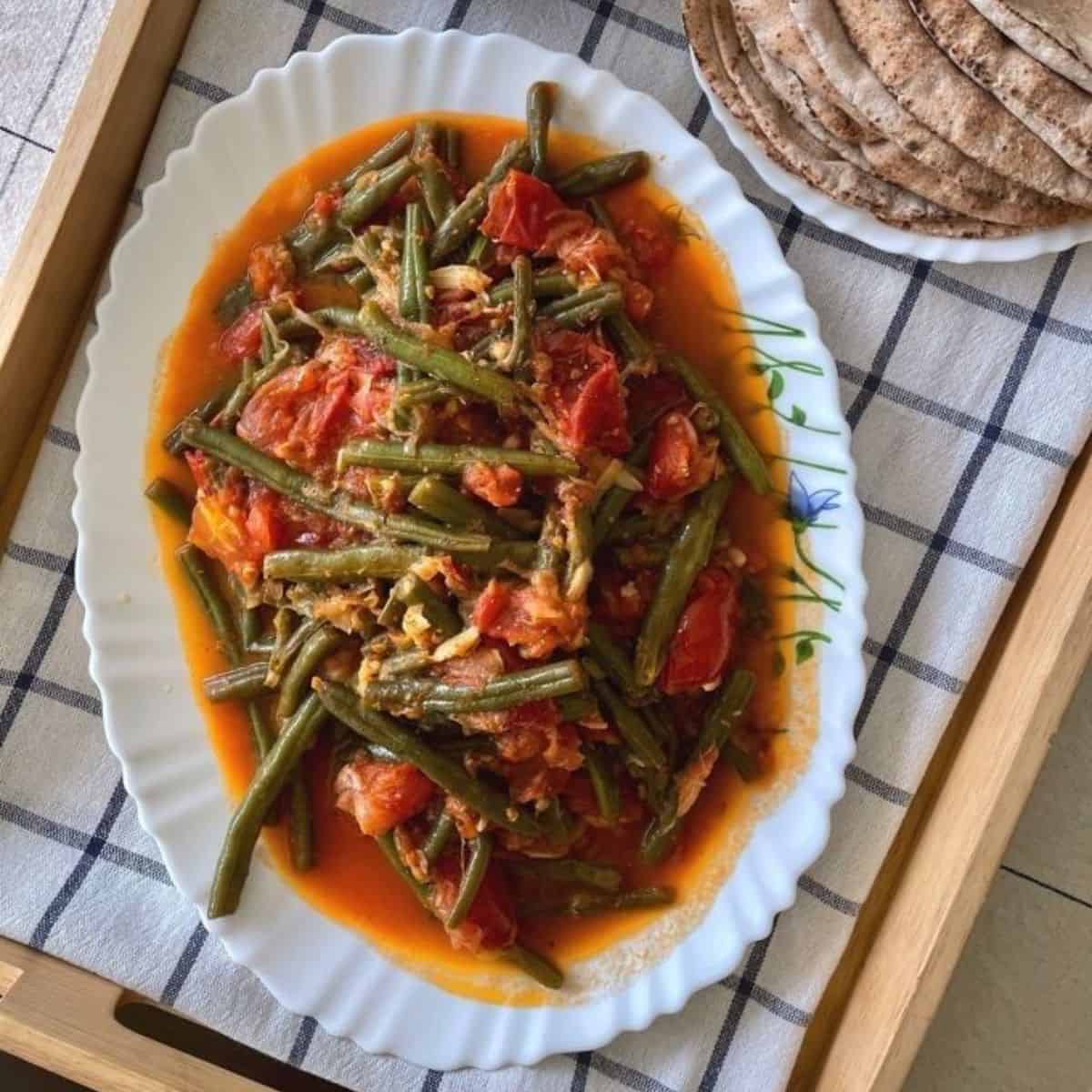

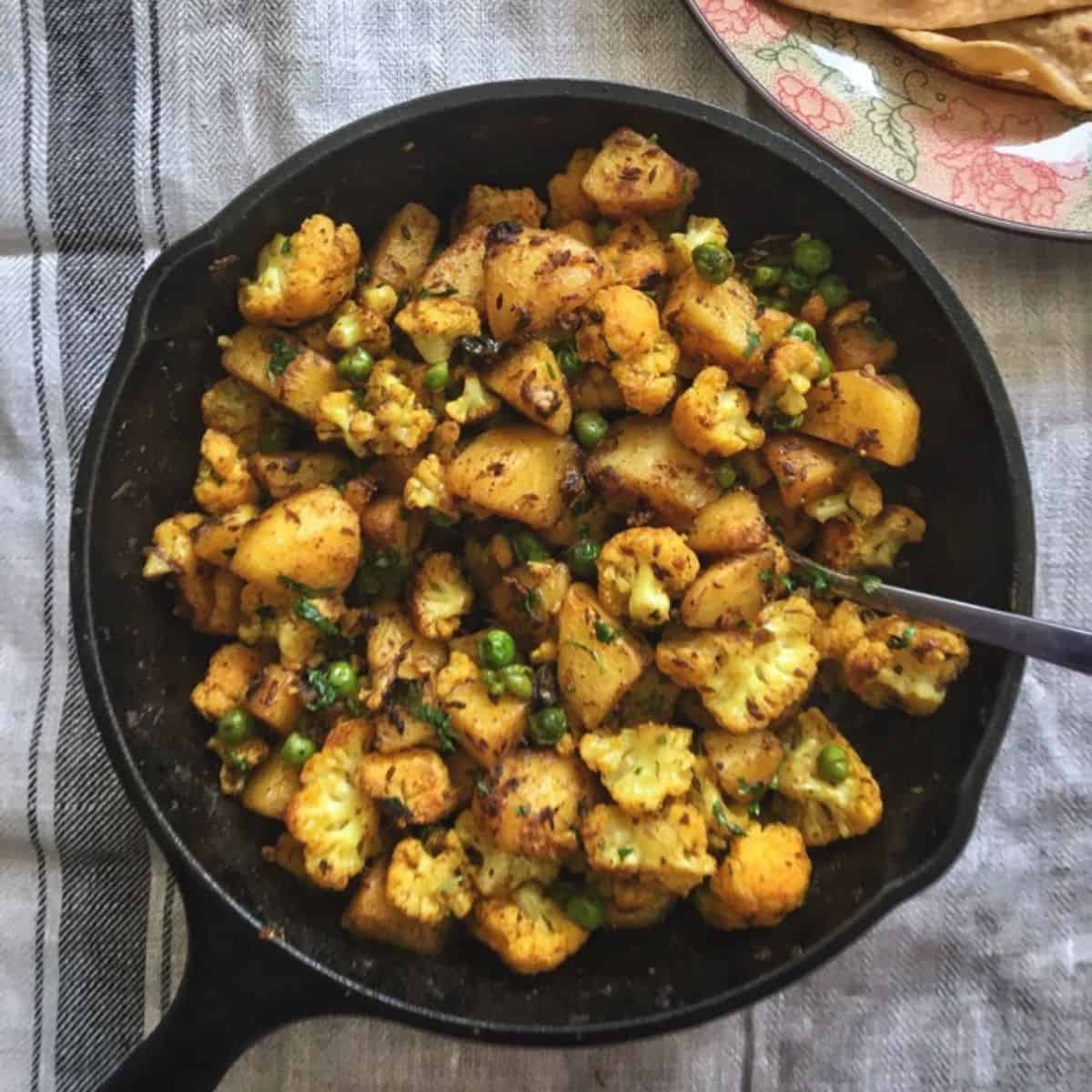
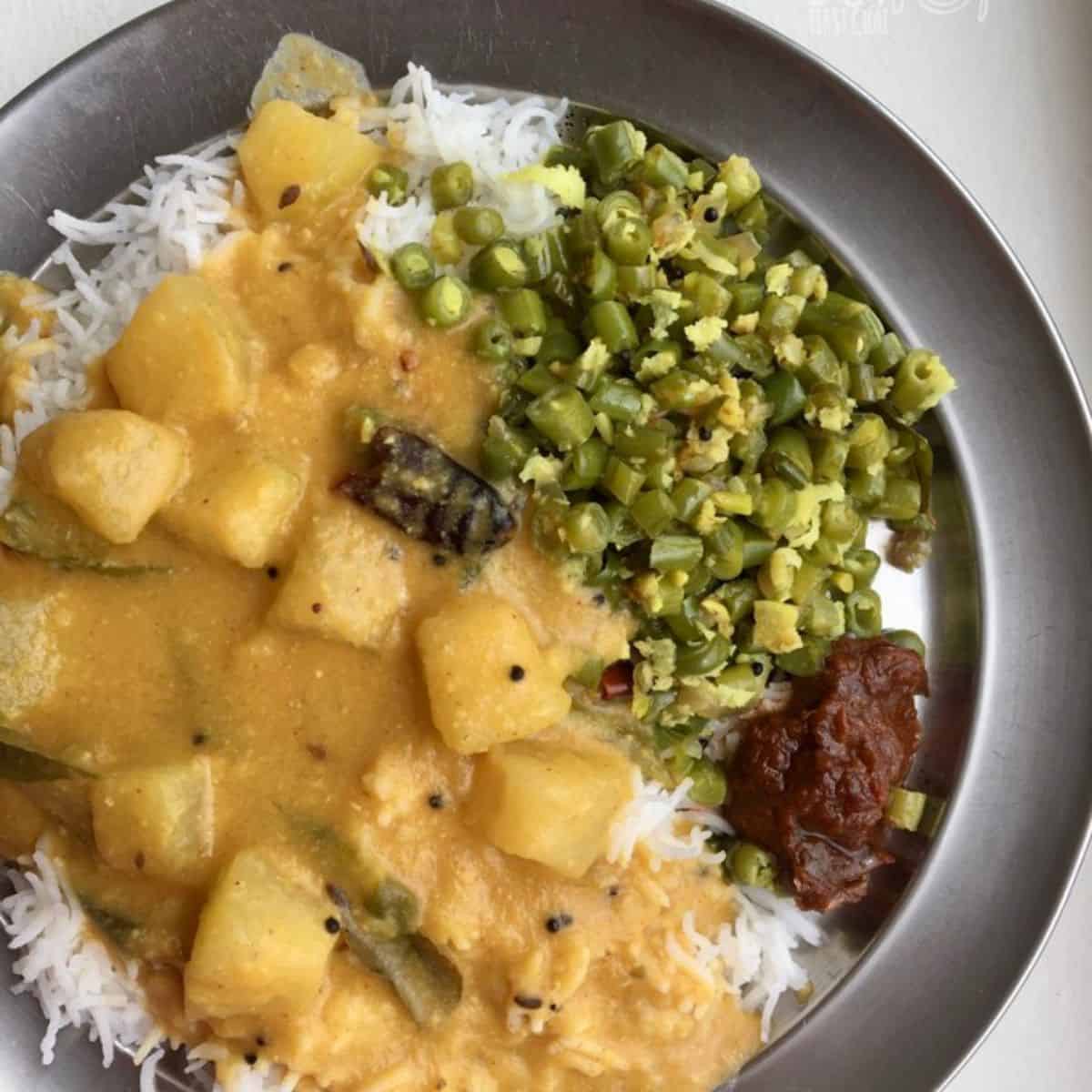

GH says
Thanks, Famidha for this delicious sambar recipe! I made it last week and will make it again today. I also enjoy reading your blog and look forward to try more recipes in future.
Famidha Ashraf says
Can there be any more Sambar recipes on the internet?? Yes, why not! Don't give up on Sambat without trying my recipe. Bonus, a homemade sambar powder that my friends get a share too!
PJ says
wow..thanks for this recipe .pls add idli recipe Famidha